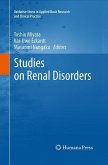There is a widespread consensus that use of antioxidants as a therapeutic approach may counteract free radical mediated pathologies. However, the role of antioxidants in normal physiology and redox signaling is still in its infancy. Since oxidative stress is related to various diseases and pathologies, scientists are eager to study the disease in humans, but it is not always ethical to study all the aspects of the disease in humans. Thus, it becomes mandatory to study the disease process and the mechanisms behind it through experimental models which generally involve animals, in vitro/cell culture studies, primates and even humans to a certain extent. Studies on Experimental Models contains data on the experimental models or review of such models of oxidative stress in various diseases. It is structured into six sections, which are as follows: diabetes, cardiovascular, neurology, ocular diseases, toxicology/environmental and in vitro/tissue culture. Each section presents a sketchof models in humans, animals and in vitro methods. Taken together, they comprise a valuable reference for basic and clinical scientists, one aimed at contributing to the advancement of oxidative stress research using appropriate animal models.
From the reviews:
"It is intended to contribute to the advancement of oxidative stress research using appropriate animal models and to serve as a valuable reference for basic and clinical scientists. ... students, basic scientists, clinical scientists, and physicians interested in understanding more about oxidative stress will find this book extremely useful. ... This book provides comprehensive coverage of studies on experimental models related to oxidative stress involved in various diseases, particularly diabetes, cardiovascular, neurological, and ocular diseases." (Omer Iqbal, Doody's Book Reviews, October, 2011)
"It is intended to contribute to the advancement of oxidative stress research using appropriate animal models and to serve as a valuable reference for basic and clinical scientists. ... students, basic scientists, clinical scientists, and physicians interested in understanding more about oxidative stress will find this book extremely useful. ... This book provides comprehensive coverage of studies on experimental models related to oxidative stress involved in various diseases, particularly diabetes, cardiovascular, neurological, and ocular diseases." (Omer Iqbal, Doody's Book Reviews, October, 2011)








